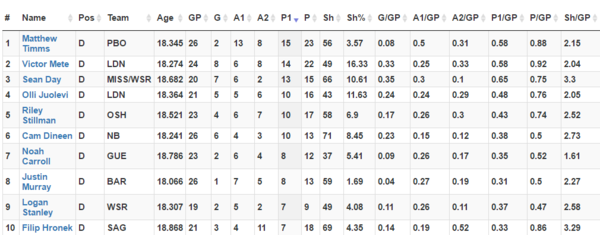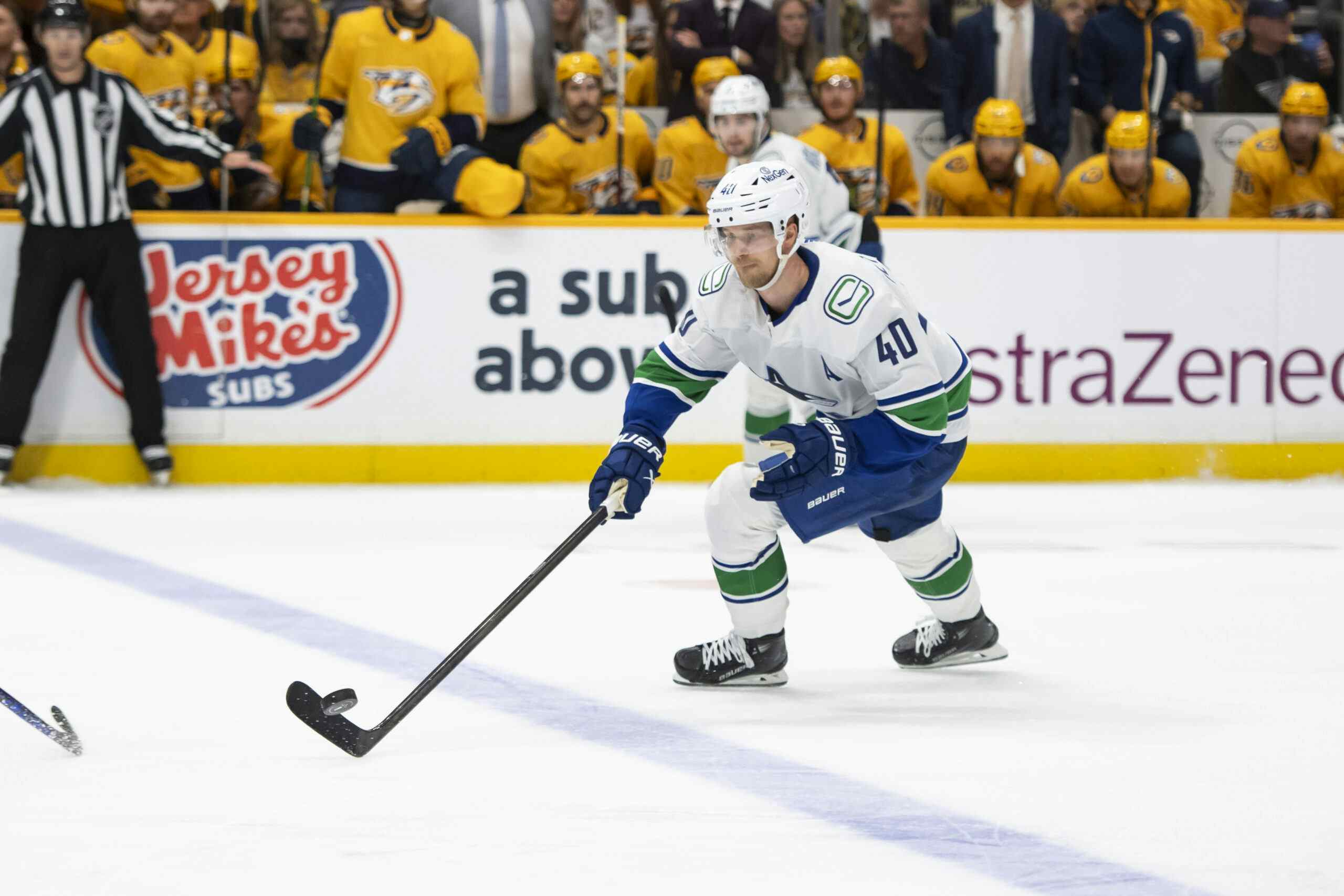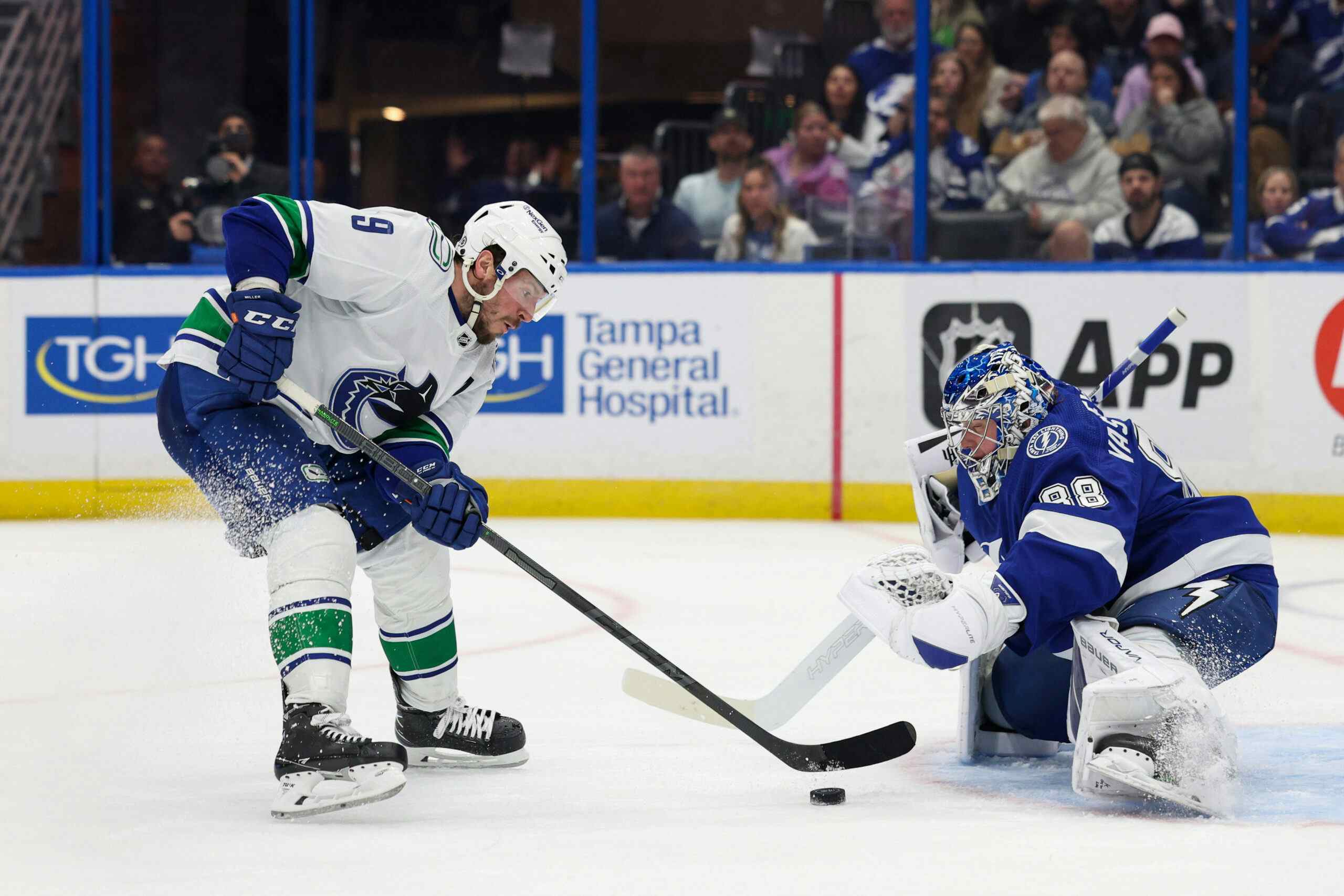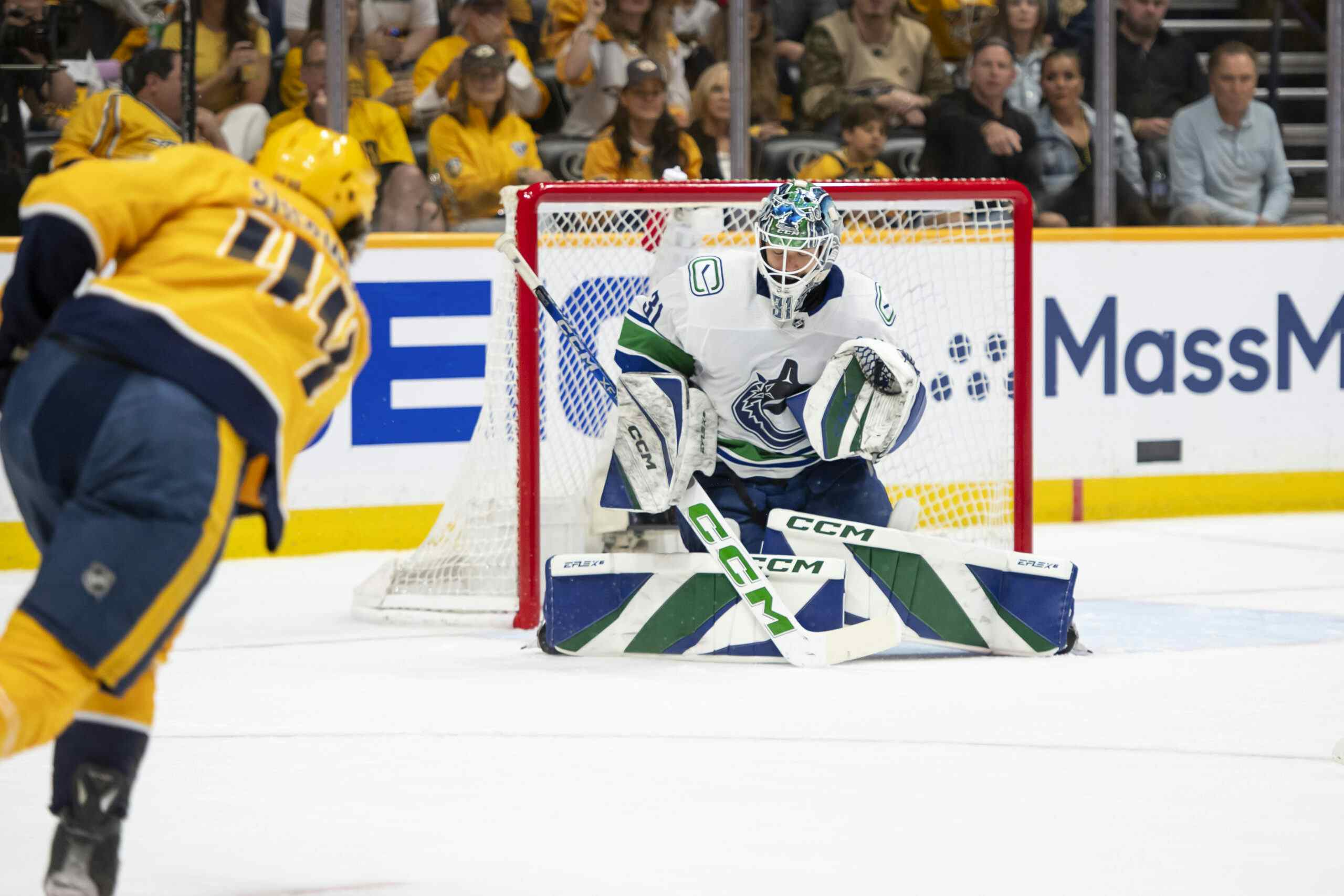Should Canucks Fans Be Worried About Olli Juolevi?
7 years ago

Photo Credit: Timothy T. Ludwig
Now that we’re over a quarter of the way through the CHL season, we now have a large enough sample size that we can begin to make inferences about how players are performing and how coaches deploy them. We’re also far enough into the season that narratives and concerns can start to take form.
With Friday’s tilt between the OHL’s Owen Sound Attack and London Knights televised on the west coast, many Canucks fans got their first look at Juolevi this season. But to their surprise, Juolevi was skating predominantly on the Knights’ second pair, behind 19-year-old Brandon Crawley and Montreal Canadiens 2016 pick Victor Mete.
That wasn’t the only troubling thing for Canucks fans about Friday’s game. His performance was underwhelming, to say the least. Juolevi took a pair of penalties in the third period and coughed up the puck on numerous occasions, one of which resulted directly in an Owen Sound goal.
Juolevi hasn’t exactly set the world aflame in his draft+1 season so far, and with Matthew Tkachuk already making an impact in the Flames’ lineup, it hasn’t been a great look for the Canucks.
This may seem like cause for concern, but let me assure you, it most certainly isn’t.
First of all, in spite of playing on the Knights’ ostensible second pair, Juolevi isn’t being deployed like a traditional #3-4 defenseman. Juolevi plays primarily with Evan Bouchard, but he’s often double-shifted, taking time with Mete as well, and he’s leading the Knights in even-strength estimated TOI with 18 and a half minutes per game.
This is common in junior hockey. The spread in talent from top to bottom of a CHL team’s lineup is often wide, and it’s not uncommon to see coaches spread their top defensemen across two or even all three defence pairs. In Juolevi’s case, he’s likely being used to help insulate his most frequent linemate Evan Bouchard, who just turned 17.
Juolevi’s currently on pace to match his totals from last year, but his boxcars this season belie his real abilities. He sits just 16th among OHL defensemen in overall points, but he’s played fewer games this season than many of his competitors. Once we make some contextual adjustments to Juolevi’s numbers, he begins to look better.
The best way to evaluate junior hockey production is to compare a player to his peers, using primary point production. Secondary Assists are generally a poor representation of a player’s offensive contributions, as factors beyond the player’s control often influence these results. Juolevi is currently rocking a primary assist rate that’s lower than 11 of the 15 players ahead of him in OHL D scoring, which is in part responsible for his underwhelming boxcar stats.

*Data courtesy of prospect-stats.com
Among 18-year-old defencemen, Juolevi ranks fourth in goals, primary points, and primary points-per-game. He’s also third in goals-per-game and ranks in the top 10 in primary assists. All this just serves to underline that Juolevi remains an elite draft+1 defenseman at the OHL level.
There’s only so much a stat line can tell you about a junior player, especially one whose contributions on are on the defensive side of the puck, which is why I reached out to Corey Pronman, a writer for ESPN Insider and friend of the blog for some insight into Juolevi’s season thus far. Pronman immediately threw cold water on the notion Juolevi’s underperformed this season and indicated changes in his deployment had more to do with Mete’s strong play than anything Juolevi has done this season.
“London has been rolling a balanced line up. Their 2 best defensemen, Juolevi and Victor Mete (MTL), have been split up. I don’t know if I’d call either pair the 1st or 2nd, they’re being rolled evenly at ES, while Juolevi gets his special teams minutes too.
His role has been cut a little due to how well Victor Mete has played. Both of them share time as the PP1 quarterback.”
What’s struck me about Juolevi in the limited time I’ve seen him is his patience and calm demeanour with the puck. It doesn’t always come through unless you’re watching him in person, but Juolevi has a tremendous toolkit that hints he may have more to show offensively, a sentiment Pronman echoed.
I’d describe his performance as very good, but not dominant. He was my top ranked defenseman at the draft so know [that] I’m a believer, but he has another level then what he’s showed so far.
That ought to be music to the ears of anyone hoping Juolevi can develop into a top-pairing defenceman for Vancouver. When you look at the numbers, it’s clear Juolevi’s performing at an acceptable level relative to where the Canucks selected him. If it is indeed the case that he’s capable of more, then expect his offensive totals to reflect that by season’s end.





